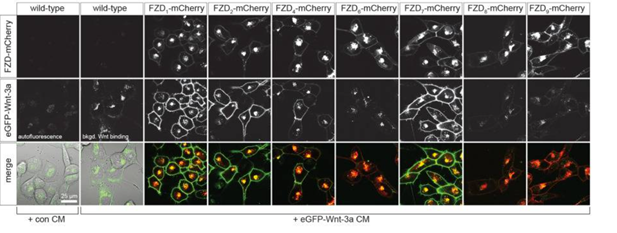Developmental Biology: Wnt signaling in mammals – and the challenging nature of the ligands.
The Wnt signaling pathway is crucial in embryonic development, tissue homeostasis and human disease. Let alone the fact that there are 19 mammalian WNT ligands to their 10 different Frizzled (FZD) receptors plus coreceptors (LRP5/6) shows the complex interaction this pathway means for cells. Although the signaling mechanism is getting more elucidated, the binding mode, kinetics and selectivity remain largely obscure.
So far, studying the ligand-receptor interactions has proven challenging due to the associated biochemistry and lipophilicity of Wnt proteins, which resulted in low specific activity and a large proportion of non-specific binding.
There have been recent advances in studying this interaction by the successful generation of a biologically active and stable eGFP-tagged murine Wnt-3a-FZD4 fusion protein.

The authors were using the I.DOT as a highly useful tool to create HEK293 cell spheroids, in which they studied the association of FZD and Wnt. This showed the successful interaction of the binding partners and with additional experiments the researchers were able to measure the downstream activity of the Wnt/β-catenin signaling pathway and ultimately to estimate the binding affinity.
Keep up with the great work and the dauntless motivation to investigate biologically challenging questions, Janine Wesslowkski, Pavel Lekin and Gary Davidson.
Read the publication.